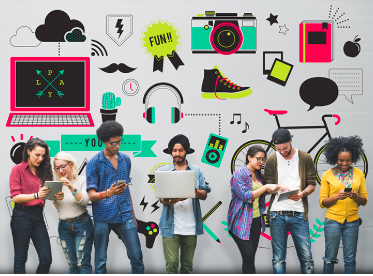Education is evolving rapidly, and 2025 promises to be a pivotal year for innovative tools and strategies in learning environments. With the continued integration of digital solutions in classrooms and homes, educators and students alike are seeing the benefits of more personalized, accessible, and engaging education. Below are some of the top trends in education technology that are shaping the future of learning.
1. Smart Classrooms Are Becoming Standard
Modern classrooms are transforming into dynamic, connected environments. Interactive displays, real-time feedback tools, and integrated classroom management systems are helping teachers streamline instruction while increasing student participation. These smart classrooms make learning more interactive and tailored to each student’s needs.
2. Personalized Learning Through Intelligent Systems
In 2025, more schools are adopting personalized learning paths supported by adaptive platforms. These systems analyze student progress and adjust the difficulty of lessons accordingly. This approach ensures that learners are neither overwhelmed nor bored, supporting stronger academic outcomes.
3. Microlearning Gains Momentum
Bite-sized lessons delivered through apps or digital modules are on the rise. Microlearning helps students absorb information in manageable chunks, making it ideal for revision, skill-building, or supplementing larger curriculums. Its flexible format fits easily into students’ daily routines.
4. Gamified Learning for Engagement
Gamification is playing a key role in boosting student motivation. Through point systems, leaderboards, and interactive challenges, learning becomes more immersive and fun. This approach has shown to improve retention and encourage consistent participation among students.
5. Cloud-Based Collaboration Tools
Cloud technology continues to support education by making content easily accessible anytime, anywhere. Tools like shared document platforms and virtual whiteboards help students work together on projects and stay connected with instructors beyond school hours.
6. Video Learning and On-Demand Tutorials
In 2025, students are increasingly turning to educational videos and streaming lessons for support. On-demand video content allows learners to revisit difficult topics at their own pace and serves as a valuable supplement to live instruction.
7. Enhanced Data Use in Education
Schools and institutions are using data to better understand student behavior and outcomes. Analytics tools help identify learning gaps, monitor attendance, and evaluate teaching methods—leading to smarter educational planning and resource use.
8. Assistive Technologies Supporting Inclusion
New digital tools are making learning more inclusive for students with different abilities. Text-to-speech programs, speech recognition tools, and simplified interfaces allow all learners to participate more fully in class activities and assessments.
9. Focus on Digital Citizenship
As students spend more time online for learning, schools are incorporating lessons on digital responsibility. Topics like online safety, respectful communication, and information literacy are becoming essential parts of the curriculum.
10. Lifelong Learning Through Online Platforms
Education is no longer confined to traditional settings. Online platforms are helping people of all ages pursue professional development, new skills, or personal interests. The growth of flexible and affordable learning options is redefining what it means to be a learner in 2025.
Conclusion
Education technology in 2025 is not just about innovation—it’s about creating smarter, more inclusive, and more effective learning experiences. These trends show how digital tools continue to support educators and empower learners around the world. As these technologies evolve, the future of learning becomes even more exciting and accessible.














